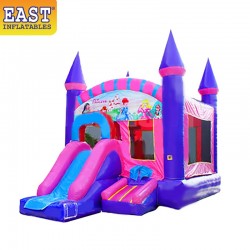
The electricity consumption of an inflatable can vary significantly depending on the size, type, and features of the inflatable, as well as the duration of its use. Inflatables, like bouncy castles, water slides, and advertising inflatables, require blowers or air pumps to keep them inflated. The power required by the blower is typically measured in watts (W) or kilowatts (kW).
1. Bouncy Castle
Small to medium-sized bouncy castles typically use blowers with a power rating of 0.5 kW to 1 kW. Larger bouncy castles may require blowers with higher power ratings, around 1 kW to 2 kW. The actual electricity consumption will depend on the specific model and the duration of use.

2. Water Slide
Water slides usually require higher-powered blowers due to their larger size and water features. Power ratings can range from 1 kW to 3 kW or more, depending on the size and complexity of the water slide.
When considering the electricity consumption of a water slide, it's essential to factor in the continuous operation of the blower, as it needs to run non-stop to keep the slide inflated and the water features operational.
3. Advertising Inflatables
Advertising inflatables, such as giant balloons or inflatable mascots, often use lower-powered blowers since they may not need to support the weight of active users. These inflatables might use blowers rated between 0.2 kW and 1 kW, depending on their size and design.
Due to their typically larger surface area, advertising inflatables can be more susceptible to wind, which might necessitate additional power for stability. However, their overall electricity consumption remains relatively low compared to other types of inflatables.

Conclusion
The electricity consumption of an inflatable largely depends on its size, type, and the blower's power rating. Bouncy castles and water slides generally require more electricity due to their active use and larger size, while advertising inflatables use less power. When planning to use an inflatable, it's crucial to consider the specific requirements of the blower to estimate the total electricity usage accurately.




Leave a Comment